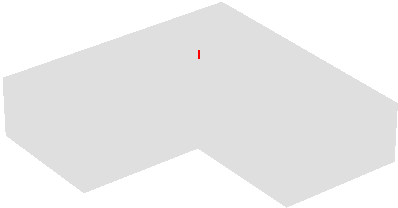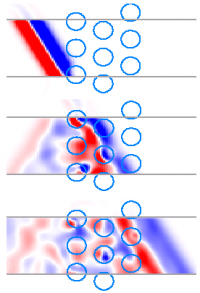|
|
 |
JDAY by Alex Yuffa is a Fortran code for a new integral equation method for direct electromagnetic scattering in homogeneous media
developed by choosing an electric field and its normal derivative as the boundary unknowns.
Lidar is affected by multiple scattering in any optically thick medium, particularly liquid clouds. Millimetre-wave radar is typically only affected when observing deep convective clouds from space. One approach to deal with this problem is to use a variational retrieval algorithm with a forward model that can represent multiple scattering while being both accurate and fast. This code is such a forward model, and consists of two algorithms.

These Mathematica script files by Markus Selmke allow the extensive study of light-particle interaction phenomena enountered in coherent focused beam illumination of spherical (multilayered) scatterers, e.g. to compute the intensity collected by a detection microscope objective and recorded with a photo-diode, radiation pressures, the rel. photothermal signal, sopectra, Poynting vector flows and near fields among other things.

openEMS is a free and open electromagnetic field solver using the FDTD method. Matlab or Octave are used as an easy and flexible scripting interface.

A Python code for computing the scattering properties of single- and dual-layered spheres with an easy-to-use object oriented interface.
Based on code by C. Mätzler; ported and published with permission.
Requires NumPy and SciPy.
Fortran program bhfield by Honoh Suzuki to compute the nearfield inside and outside of a coated sphere.
H. Suzuki and I-Y. S. Lee: Calculation of the Mie Scattering Field inside and outside a Coated Spherical Particle, Int. J. Phys. Sci., 3, 38-41 (2008; Errata: Int. J. Phys. Sci. 4, 615, 2009).
H. Suzuki and I-Y. S. Lee: Mie Scattering Field inside and near a Coated Sphere: Computation and Biomedical Applications, J. Quant. Spectrosc. Radiat. Transfer, in press (2012).

B-CALM or Belgium California Light Machine is a fast 3D GPU-based Finite-Difference Time-Domain simulation tool for electromagnetic simulations.

MatScat is a MATLAB package by Jan Schäfer which contains different solutions for the scattering of electromagnetic radiation by a sphere (Mie theory) or an infinite circular cylinder.
Read more ...
Electromagnetic Template Library (EMTL) is a free C++ program for electromagnetic simulations. The current version of the program is designed for quick and efficient programming of FDTD simulations and for extending the available FDTD algorithms with new techniques and features.

The Metal Nanoparticle (MNP) simulator is a GUI written by Guido Goldoni in Matlab as part of the NANOLAB project (www.nanolab.unimore.it).
MNP allows to simulate the absorption, extinction and scattering spectra of metallic nanoparticles dispersed in a solution. The material and size of the nanoparticles can be changed, as well as the type of solution, to highlight the size dependence of the optical properties of nano-materials, and their possible use, e.g., as sensors.
The MNP GUI uses the Mie theory to simulate spherical nanoparticles. MNP also tries to simulate the color of the solution as perceived by the human eye using colorimetric methods. The perceived color depends on the spectrum of the light source, which can also be changed.

|
|
 |
|